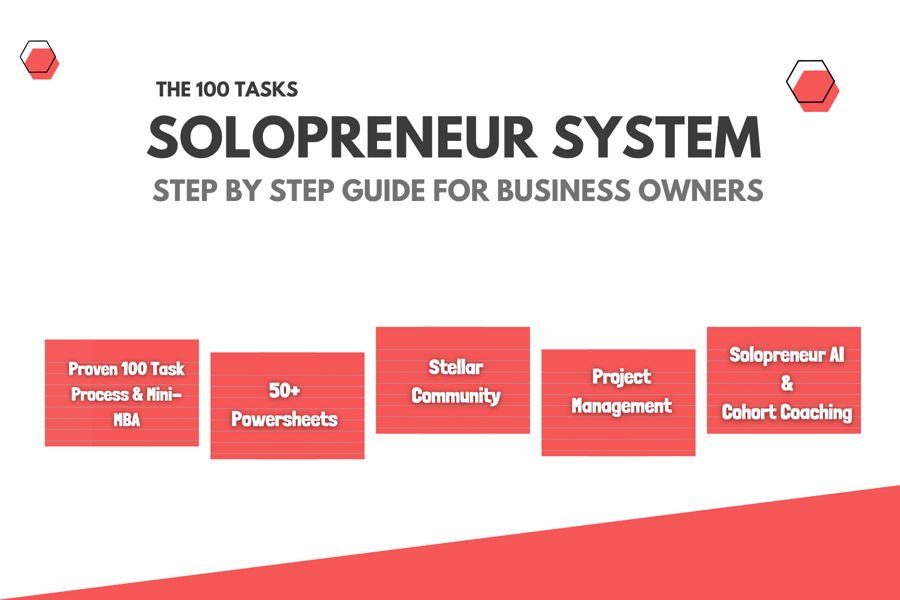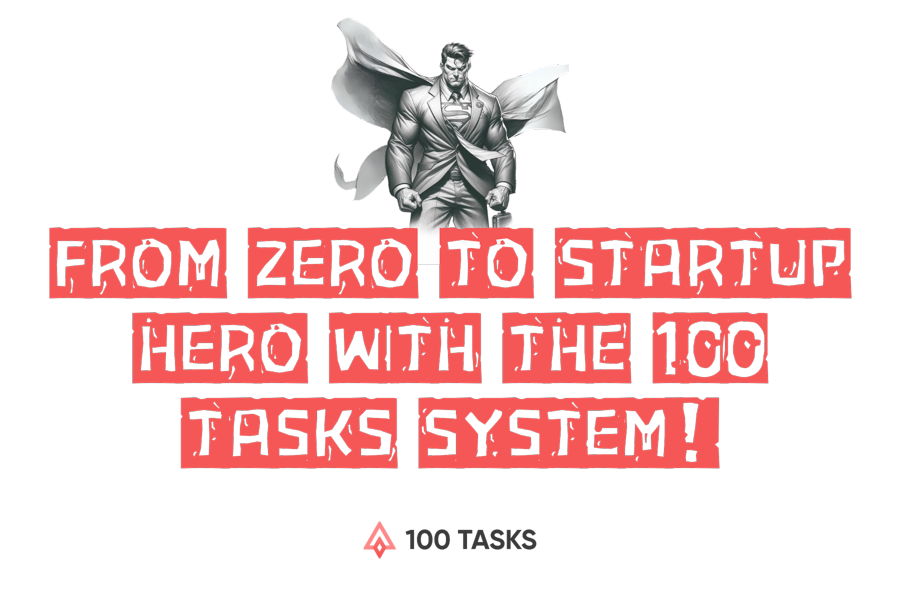Thinking of starting a side business? Discover practical steps to build a profitable side business venture sustainably and lucratively.
In today’s dynamic and ever-evolving economy, the concept of traditional employment has transformed into a multifaceted landscape.
More and more people are exploring the world of lucrative side businesses that make money as a means to not only supplement their income, but also to pursue their passions, test entrepreneurial waters, and achieve financial independence.
Whether you dream of turning a hobby into a profitable side hustle or simply wish to diversify your income streams, starting a profitable side business is an enticing prospect.
However, embarking on the journey of starting a side business requires careful planning, dedication, and a well-thought-out strategy.
In this article, we will guide you through the essential steps and insights necessary to navigate the exciting realm of potentially lucrative side businesses.
You’ll discover how to turn your skills, passions, and ideas into a successful endeavor that not only fills your bank account but also brings you immense satisfaction and fulfillment.
Click here to get the Ultimate Founders Checklist
Contents
- How to Build a Profitable Side Business Venture
- #1. Identify Your Passion and Skills
- #2. Research Your Target Market
- #3. Brainstorm Side Business Ideas
- #4. Evaluate Business Viability
- #5. Create a Business Plan
- #6. Be Legally & Financially Compliant
- #7. Set a Budget & Be Frugal
- #8. Build an Online Presence
- #9. Create a Marketing Strategy
- #10. Start Small & Pace Yourself
- #11. Prioritize Quality & Customer Service
- #12. Manage Your Time Effectively
- #13. Track Your Business Finances
- #14. Adapt and Evolve
- #15. Scale Up Gradually
- #16. Seek Business Mentoring & Support
- #17. Stay Committed and Patient
- Business Tips & Tutorials
How to Build a Profitable Side Business Venture
Starting a profitable side business can be a rewarding way to earn extra income and potentially even transition into a full-time venture. These side business tips offer a step-by-step guide to help you get started:
#1. Identify Your Passion and Skills
When embarking on the journey of starting a profitable side business, the first and most crucial step is to choose a venture that resonates with your interests, skills, and expertise.
Picture yourself waking up every day excited about the work ahead, and you’re on the right track. Why? Passion is the secret sauce that keeps you motivated, especially when challenges arise.
Imagine leveraging your hobbies, talents, or the knowledge you’ve acquired over the years to build a thriving endeavor. It’s like turning a fun puzzle into a profitable masterpiece.
So, as you start lucrative side businesses to make money on the side, remember that aligning your passion with your pursuit is the first key to financial success, personal fulfillment, and happiness.
Unlock the golden gates to online prosperity with this list of the best skills to earn money from internet business ventures. It will help you dive into a treasure trove of ingenious online side business ideas that promise to be your ticket to financial freedom.
#2. Research Your Target Market
In the exhilarating journey of establishing a profitable side business, the importance of market research cannot be overstated. Before diving headfirst into your venture, take the time to thoroughly understand your target market’s needs, preferences, and pain points.
By doing so, you’ll gain invaluable insights into the very heartbeat of your potential customers. Delve deep into your market’s dynamics, seeking out those gaps and opportunities waiting to be seized. It’s akin to navigating uncharted waters, equipped with a treasure map.
Martin Bell’s Ultimate Founders Checklist will help you systematically launch and scale your startup 3 to 5X faster. You’ll learn how to unlock the potential of your startup with the 100 Tasks Holistic Ecosystem — an innovative platform designed to accelerate the growth of your business.
Armed with this knowledge, you can tailor your side business to address precisely what your audience is yearning for, ensuring that your endeavor not only thrives but also fulfills a genuine demand in the market. It’s the strategic cornerstone that sets the stage for your side business’s success.
#3. Brainstorm Side Business Ideas
As you embark on the exciting journey of launching a profitable side business, your next vital step is to brainstorm potential business ideas, drawing inspiration from your earlier market research.
Think of this phase as a creative exploration, where you dissect the information that you’ve gathered to uncover innovative solutions and valuable propositions for your target audience. It’s in this brainstorming process that you give birth to the seeds of your entrepreneurial vision.
Consider how you can address the challenges and pain points your audience faces. Imagine yourself as the problem solver, the provider of solutions that not only meet but exceed the needs and expectations of your potential customers.
What unique skills, knowledge, or products can you offer that would make their lives better or easier? Here are some proven and profitable side business ideas worth considering:
- Start a faceless YouTube channel
- Start an affiliate marketing business
- Start a virtual assistant (VA) business
- Become a Pinterest manager
- Start a dog treat bakery or dog treat store
- Start a web content writing business
- Blog ideas to earn money from blogging
- Sell art online and make money from your artwork
- Sell on Amazon and start an Amazon FBA business
The 100 Tasks System guides you seamlessly through the essential stages of building a thriving startup: Setup, Launch, and Scale. It covers every aspect of the value chain, from ideation and fundraising to Minimum Viable Product (MVP) development and rapid scaling.
By fusing your expertise with the insights you’ve gathered, you’ll lay the foundation for a side business that not only thrives but also makes a meaningful impact on the lives of your customers. So, let your creative juices flow, and explore the boundless possibilities that lie ahead.
#4. Evaluate Business Viability
In your quest to start a successful and profitable side business, it’s crucial to methodically assess the feasibility and profitability of the side business ideas you’ve brainstormed. This step involves a careful examination of various factors that can significantly impact your business’s success.
- Startup Costs: Begin by evaluating the initial investment required for each idea. Take into account expenses such as equipment, inventory, marketing, and any necessary licenses or permits. Determine if you have the financial resources to cover these costs.
- Time Commitment: Consider how much time you can realistically dedicate to your side business. Some ideas may require more hands-on involvement than others. Ensure that your chosen idea aligns with your available time and energy.
- Market Demand: Revisit your market research findings and assess whether there is a genuine demand for the product or service you intend to offer. A viable side business idea should address a specific need or problem in the market.
- Competition: Analyze the competitive landscape. Is the market saturated with similar offerings, or is there room for differentiation? A unique selling proposition can set your side business apart.
- Potential Earnings: Estimate the potential earnings from each idea. Research pricing strategies, profit margins, and sales projections. Be realistic about the income you can generate.
- Personal Fulfillment: Don’t overlook the personal aspect. Choose an idea that resonates with your interests and passions. A side business should bring you joy and satisfaction beyond financial rewards.
- Sustainability: Consider the long-term sustainability of your chosen business idea. Is it a fleeting trend, or does it have the potential for ongoing success and growth?
- Resource Availability: Assess whether you have the necessary resources, skills, or connections to execute your idea effectively. Identify any gaps that need to be addressed.
- Risks and Contingencies: Identify potential risks and develop contingency plans to mitigate them. Understanding and planning for challenges is vital to the success of your side business.
- Legal and Regulatory Compliance: Ensure that your chosen business idea complies with all relevant laws and regulations. Seek legal advice if needed.
After a thorough assessment, choose the side business idea that not only aligns with your financial goals but also resonates with your personal interests and values.
In the ‘Idea Validation: From Idea to Paying Customer in One Day’ course, you’ll learn how to test your business and product ideas online quickly, cheaply, and easily so you can make sales even before you launch.
Striking a balance between financial viability and personal fulfillment is key to building a side business that you can passionately and sustainably pursue.
#5. Create a Business Plan
Creating a concise yet effective business plan is crucial for your side business’s success. Develop a simple business plan outlining your goals, target audience, marketing strategy, pricing, and financial projections.
Summarize your business by explaining what it offers, its objectives, and the target audience it serves. Outline your marketing and pricing strategies, emphasizing how you’ll reach and engage customers while maintaining competitive pricing.
Touch upon financial projections and funding needs, briefly stating your expected expenses, revenue forecasts, and whether external funding will be required.
The Complete Business Plan Course, taught by an award-winning business school professor, venture capitalist, and successful entrepreneur, empowers you to craft an outstanding business plan and create a stellar startup presentation with 25 templates included.
Having a roadmap in the form of a business plan will help you stay focused and organized. Regularly update your business plan as your side business grows to stay focused and adaptable to changing circumstances.
Click here to get the 100 Tasks Solopreneur System
#6. Be Legally & Financially Compliant
Navigating the regulatory landscape is a vital aspect of launching a side business. Depending on your business’s nature and location, you may be required to register it formally, secure licenses, or adhere to specific industry regulations.
These legal and administrative requirements ensure your business operates within the bounds of the law. Should you find the regulatory waters murky or unfamiliar, seeking guidance from a legal or financial advisor is a wise move.
They can provide clarity on the necessary steps, help with paperwork, and ensure compliance, allowing you to focus on growing your business without the burden of legal concerns.
By proactively addressing these matters, you’re not only safeguarding your side business but also setting a solid foundation for its future success.
#7. Set a Budget & Be Frugal
Before diving headlong into your side business venture, it’s crucial to establish a clear financial plan. Begin by determining the amount of capital you’re willing to invest in your endeavor.
This financial threshold should align with your personal budget and financial limitations. In the early stages, it’s wise to be frugal and keep costs as low as possible.
Careful budgeting can help you allocate resources efficiently, allowing you to focus on the essentials. Consider essential expenses such as equipment, marketing, initial inventory, and any necessary licenses or permits.
By keeping your initial investment in check, you reduce financial risk and increase the chances of a positive return on your investment. Remember that as your side business grows and starts generating income, you can reinvest profits to further expand and develop your venture.
By being mindful of your financial constraints and prudent with your spending, you set a strong foundation for your side business’s financial success.
Click here to get the Ultimate Founders Checklist
#8. Build an Online Presence
Building a robust online presence is essential for the success of your side business. Start by creating a professional website or social media profile dedicated to your venture.
A well-designed website serves as a virtual storefront, where potential customers can learn about your products or services, read reviews, and get in touch with you.
Ensure that your website is user-friendly, mobile-responsive, and contains essential information like your contact details, a clear description of what you offer, pricing if applicable, and compelling visuals that showcase your offerings.
Additionally, establish a presence on social media platforms that align with your target audience. Consistent and engaging social media posts can help you connect with potential customers, showcase your expertise, and drive traffic to your website.
Respond promptly to inquiries and engage with your audience to build trust and credibility. By creating a strong online presence and online community, you make it easier for potential customers to discover your side business and gain confidence in your offerings, ultimately contributing to its growth and success.
#9. Create a Marketing Strategy
Creating a succinct yet comprehensive digital marketing strategy is vital for your side business’s growth. Begin by defining your target audience, and understanding their needs, preferences, and pain points. This clarity will guide your marketing efforts effectively.
Leverage the power of social media and email marketing. Establish a strong presence on platforms that align with your audience, engaging with them through engaging content and personalized emails.
Use social media for community-building and sharing valuable insights. Meanwhile, email marketing allows you to reach your audience directly with tailored messages and promotions.
Invest in content marketing by crafting high-quality, informative content that addresses your audience’s concerns and interests. Share it on your website and social media profiles, positioning you as an authority in your niche.
Consider paid advertising, networking, and customer feedback. Paid advertising can provide a quick reach to a broader audience. Networking can help you establish valuable relationships and partnerships, while customer feedback and reviews build trust and credibility.
Consistency and adaptability are key. Regularly assess the performance of your marketing efforts using analytics tools and adjust your marketing strategy accordingly to optimize results and effectively reach your target audience.
Click here to get the Ultimate Founders Checklist
#10. Start Small & Pace Yourself
Launching your side business should be a carefully paced endeavor. It’s crucial not to overextend yourself from the outset. Start on a small scale to test the waters and gather valuable feedback.
By beginning modestly, you minimize financial risk and allow room for adjustments based on initial results. This approach also enables you to fine-tune your offerings, marketing strategies, and operations as you gain experience and confidence in the side business landscape.
As you gather insights, gradually expand your side business in line with your growing understanding of your audience and market. Scaling up step by step ensures that each expansion is well-informed and sustainable, setting the stage for long-term success.
Remember, it’s not about how fast you grow, but how effectively you do so while maintaining the quality and integrity of your venture.
#11. Prioritize Quality & Customer Service
Prioritizing excellent customer service and the delivery of high-quality products or services is the cornerstone of a successful side business. Happy customers not only ensure repeat business but are also more likely to become advocates who recommend your services to others.
To achieve this, consistently exceed customer expectations. Maintain a commitment to delivering top-notch products or services. Be responsive to inquiries and concerns, and always strive to resolve issues promptly and professionally.
Actively seek customer feedback and use it to improve your offerings. Building a strong rapport with customers fosters trust and loyalty, making them more likely to return and refer others.
Quality is your best marketing tool. It not only satisfies current customers but also positions your side business for long-term growth and a stellar reputation in the marketplace. Ultimately, customer satisfaction is the key to the sustained success of your side business.
Martin Bell’s Ultimate Founders Checklist will help you systematically launch and scale your startup 3 to 5X faster. It covers every aspect of the value chain, from ideation and fundraising to Minimum Viable Product (MVP) development and rapid scaling.
You’ll learn how to unlock the potential of your startup with the 100 Tasks Holistic Ecosystem — a bulletproof startup-building process with real-life cases covering the entire value chain designed to accelerate the growth of your business.
Click here to get the Ultimate Founders Checklist
#12. Manage Your Time Effectively
Balancing a side business alongside a full-time job or other commitments demands effective time management and discipline. Here’s a strategy to help you maintain equilibrium:
- Create a Schedule: Develop a clear and realistic schedule that outlines your work hours, side business commitments, and personal time. Allocate specific time blocks for tasks related to your side business.
- Prioritize Tasks: Identify the most critical tasks for your side business, such as product development, customer outreach, and marketing efforts. Allocate your most productive hours to these high-priority tasks.
- Set Goals: Establish clear and achievable goals for your side business. This helps you stay focused on what matters most and measure your progress.
- Delegate or Automate: If possible, delegate non-essential tasks or automate repetitive processes. Tools and services are available to streamline many aspects of your side business, from social media posting to email marketing.
- Limit Distractions: Minimize distractions during your dedicated work hours. This might mean silencing your phone, using website blockers, or designating a quiet workspace.
- Batch Tasks: Group similar tasks together and tackle them during designated time blocks. For instance, handle all customer inquiries and emails at one time rather than sporadically throughout the day.
- Be Realistic: Set achievable expectations for your side business progress. It’s important to avoid burnout by recognizing your limitations and pacing yourself.
- Practice Self-Care: Remember to allocate time for self-care and relaxation. Maintaining a healthy work-life balance is vital for long-term sustainability.
- Adapt and Adjust: Periodically review and adjust your schedule and priorities as needed. Life circumstances and business demands can change, so flexibility is key.
- Seek Support: Don’t hesitate to ask for help from family, friends, or potential business partners if you find yourself overwhelmed.
Balancing a side business with other responsibilities is undoubtedly a challenge, but with effective time management and a disciplined approach, it’s entirely possible to achieve your goals and make steady progress toward your entrepreneurial aspirations.
#13. Track Your Business Finances
Maintaining meticulous records of your side business’s income and expenses is a fundamental practice for ensuring its financial health and making informed decisions. Here’s why it’s essential and how to do it effectively:
- Financial Clarity: Accurate records provide a clear picture of your side business’s financial status. You’ll know how much money is coming in and where it’s going out, which is vital for maintaining control and stability.
- Tax Compliance: Proper record-keeping is crucial for tax purposes. You’ll be able to track deductible expenses and accurately report your income, reducing the risk of tax issues and penalties.
- Informed Decision-Making: With financial data at your fingertips, you can make informed decisions about pricing, budgeting, investments, and growth strategies. This ensures that your side business stays on the right track.
- Business Growth: Detailed financial records allow you to identify trends, assess the profitability of different products or services, and discover areas where you can cut costs or optimize revenue.
To keep accurate records:
- Use accounting software or apps to track income and expenses automatically.
- Keep all receipts and invoices organized and accessible.
- Regularly reconcile your financial records with bank statements.
- Categorize expenses to understand where your money is going.
- Maintain separate business and personal bank accounts.
- Consider consulting a professional accountant or tax advisor for guidance.
Quaderno Tax Automation Software helps you experience hassle-free global tax compliance by seamlessly integrating with your systems and automating the entire sales tax process.
Compatible with your preferred e-commerce platform, shopping cart, or payment processor, Quaderno’s secure APIs swiftly access your sales data, initiate automated tax processes, boost conversions at checkout, and streamline your billing process.
By diligently recording your side business’s financial transactions, you’ll not only maintain its health but also set the foundation for smart financial planning and growth.
#14. Adapt and Evolve
Adaptability is the cornerstone of a successful side business. Staying flexible and open to change is crucial for responding to feedback and market trends effectively. Here’s why it’s vital and how to embrace it:
- Market Dynamics: Markets are dynamic and constantly evolving. What worked yesterday may not work tomorrow. By remaining flexible, you can seize emerging opportunities and navigate challenges as they arise.
- Customer Feedback: Listen to your customers. Their feedback can provide valuable insights into what’s working and what needs improvement. Be receptive to their suggestions and make adjustments accordingly.
- Competitive Landscape: Keep an eye on your competitors. Study their strategies and adapt yours as needed to stay competitive. Being open to change can help you differentiate and innovate.
- Technology Advancements: Technology is ever-changing and can impact your industry. Embrace new tools and platforms that can enhance your side business’s efficiency and reach.
- Evolving Trends: Consumer preferences and trends can shift rapidly. Be willing to pivot your offerings or marketing strategies to align with changing demands.
To stay flexible:
- Regularly review your business plan and goals to ensure they remain relevant.
- Monitor key performance indicators (KPIs) to gauge the effectiveness of your strategies.
- Seek input from mentors, advisors, or peers who can offer fresh perspectives.
- Embrace a culture of experimentation and learning from both successes and failures.
In the dynamic world of side businesses, adaptability is a competitive advantage. By remaining open to change and willing to pivot, when necessary, you position your side business for long-term resilience and growth.
#15. Scale Up Gradually
When your side business demonstrates potential and a positive trajectory, it’s time to contemplate scaling it up for greater success. Scaling involves strategic expansion and growth measures that can help you maximize your business’s potential. Here’s how to go about it:
- Offerings Expansion: Consider diversifying your product or service offerings. Analyze your customer base and market to identify complementary products or services that could resonate with your audience.
- Hiring Assistance: As the workload increases, you may need additional help. Hire employees or contractors to handle tasks that free up your time to focus on core business activities and growth strategies.
- Marketing and Outreach: Invest in marketing and outreach efforts to expand your customer base. This could include targeted advertising, content marketing, or expanding your presence on social media platforms.
- Technology Adoption: Implement technology solutions and business automation tools that can streamline processes and improve efficiency. This can help you manage a larger customer base and handle increased demand.
- Financial Planning: Reassess your financial plan and projections to accommodate the increased scale. Secure financing or capital if needed to support growth initiatives.
- Quality Control: Maintain a strong focus on quality control as you scale. Ensuring that your products or services consistently meet or exceed customer expectations is essential to retaining and attracting customers.
- Feedback Loop: Continue to gather feedback from your customers as you scale. Their input will help you refine your offerings and maintain a customer-centric approach.
- Risk Management: Be aware of potential risks associated with scaling and have contingency plans in place. Growth can bring new challenges, and preparedness is key to mitigating risks.
Scaling should be a gradual and strategic process, tailored to the unique needs and opportunities of your side business. By carefully considering these factors and taking measured steps, you can successfully expand your side business and unlock its full potential.
#16. Seek Business Mentoring & Support
According to entrepreneur coach, A.J. Riedel, “So many aspiring entrepreneurs hold themselves back and stay stuck in jobs that they hate … because they are worried about how they would pay the bills and support their family. Starting your business as a side hustle is a great way to get some revenue coming in while you’re still working for a paycheck.”
Seeking advice and guidance from experienced entrepreneurs and mentors is a wise and invaluable step in your side business journey. Here’s why it’s essential and how to go about it:
- Benefit from Experience: Seasoned entrepreneurs and mentors have navigated the entrepreneurial landscape and encountered a wide range of challenges and successes. Their insights can save you time, money, and frustration by helping you avoid common pitfalls.
- Objective Perspective: Business mentors can offer an objective perspective on your side business by providing constructive feedback and alternative viewpoints that you might not have considered.
- Networking Opportunities: Connecting with experienced individuals in your industry or niche can expand your network and open doors to potential partnerships, collaborations, or investment opportunities.
- Mentorship and Guidance: A business mentor can provide ongoing support, answer your questions, and offer guidance tailored to your specific business needs. They can help you set goals and hold you accountable for achieving them.
- Personal Growth: Interacting with mentors and experienced entrepreneurs can contribute to your personal and professional growth, providing you with valuable skills and insights that extend beyond your side business.
To seek advice and guidance effectively:
- Identify potential mentors or advisors within your industry or network.
- Attending industry-related events, conferences, and local networking meetups to make connections.
- Join online forums or communities where experienced entrepreneurs and mentors participate.
- Be respectful of their time and expertise. Prepare specific questions and be receptive to their feedback.
- Consider formal mentorship programs or organizations that match you with experienced mentors.
Remember that seeking advice is a sign of strength and a commitment to continuous learning and improvement. By tapping into the knowledge and experience of others, you can enhance your chances of success in your side business endeavors.
#17. Stay Committed and Patient
Building a successful side business is indeed a journey that requires dedication, patience, and a commitment to continuous learning. Here’s why these qualities are essential and how to cultivate them:
- Time and Effort: Business success rarely happens overnight. It takes consistent effort and dedication to develop a side business into a thriving venture. Understand that setbacks and challenges are a natural part of the process.
- Commitment: Stay committed to your goals, even when faced with obstacles or slow progress. A strong sense of purpose will keep you motivated during challenging times.
- Patience: Rome wasn’t built in a day, and neither is a successful side business. Patience is vital as you work through the ups and downs, learning and adapting along the way.
- Continuous Learning: Embrace every experience as an opportunity to learn and grow. Whether it’s a successful sale, a customer complaint, or a new marketing strategy, each experience can provide valuable insights.
- Adaptability: Be willing to adapt and pivot when necessary. The ability to adjust your approach based on feedback and changing circumstances is a key driver of success.
- Milestones and Celebrations: Set small milestones and celebrate your achievements along the way. Recognizing your progress can boost your morale and keep you motivated.
- Support System: Surround yourself with a supportive network of friends, family, and fellow entrepreneurs who can offer encouragement and advice.
- Self-Care: Don’t forget to take care of yourself physically and mentally. Burnout can be a significant roadblock to success.
- Long-Term Vision: Keep your long-term vision in mind. Understand that the effort and patience invested today will pave the way for a more prosperous future.
Remember that entrepreneurial success is a journey with no fixed timeline. Each step you take, each lesson you learn, and each challenge you overcome contributes to your growth and the eventual success of your side business.
Stay committed and persistent, be patient, continue refining your approach, and embrace the learning process as you work toward your goals. Remember that success in a side business often comes gradually, so be prepared for setbacks and challenges along the way.
Business Tips & Tutorials
- The Ultimate Founders Checklist to Launch & Scale Your Startup
- Best Business Courses To Learn Entrepreneur Skills
- 15 AI Side Hustles to Make Money on the Side
- How to Scale and Grow Your Solopreneur Business
- How To Find and Research Your Niche Market
- How To Write a Unique Selling Proposition (USP)
- Best Skills To Earn Money From Internet Business Ventures
- Starting a Pet Business: 15 Lucrative Pet-Related Business Ideas
- Best Recession Proof-Businesses To Start In An Economic Downturn
- 7 Steps To Go From Employee To Entrepreneur Mindset
- How To Use The Law Of Attraction For Business Success
- How to Create an Online Presence for Your Business
- Get The Best Small Business Insurance For Business Owners
- Best Virtual Assistant Websites for Outsourcing Services
© 2023 – 2024, Priya Florence Shah. All rights reserved.
Priya Florence Shah is a bestselling author and an award-winning blogger. Check out Devi2Diva, her book on emotional self-care for women. In her spare time, Priya writes science-fiction novels and poetry and chills with her two-legged and four-legged kids.
Discover more from Business & Branding Tips
Subscribe to get the latest posts sent to your email.
























